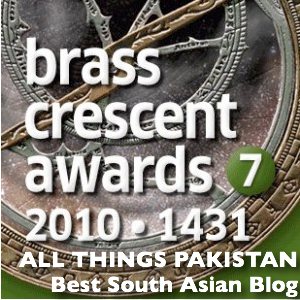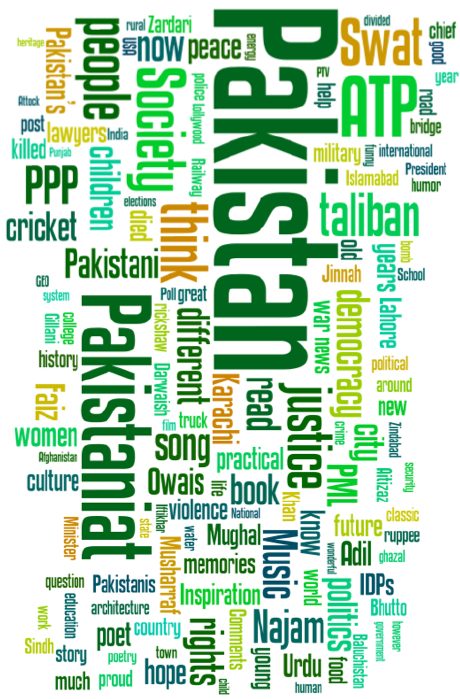S.A.J Shirazi
 To-ing and fro-ing, at time zigzagging, in Punjab introduces to wonders and legions of what may be called middle ground of cultural fusion of the present Punjab. The area is gold mine for history seekers, spiritual and curious travelers. You may find much more than what you hear or read. It pays to get out into the countryside and talk to ordinary people.
To-ing and fro-ing, at time zigzagging, in Punjab introduces to wonders and legions of what may be called middle ground of cultural fusion of the present Punjab. The area is gold mine for history seekers, spiritual and curious travelers. You may find much more than what you hear or read. It pays to get out into the countryside and talk to ordinary people.
People of the area are eager to help – on their own expense – when you ask any body. One finds volunteer ‘guides’ who were forth coming with wealth of information. Chillianwala is a historic village that played an important role in the history of the South Asia. It was a battle ground where British and Sikh forces fought one of the decisive battles in the history of the Subcontinent in 1849. The quiet village has not changed much since then. Only slowly old agricultural methods are changing and tractors and wheat threshers are seen in please of bull driven ploughs. Painted double story houses are coming up where used to be conventional mud houses. Land is excellent with record carrying capacity and the display of seasonal crop is very powerful.
The Battle fought in the fields of Chillianwala (not to be mixed with Jallianwala Bagh massacre) was possibly the turning point for the British. Had the British lost to the Sikhs on January 13, 1849, it is difficult to see how they could have sustained their hold over the Subcontinent.
Oddly, both the British and the Sikhs consider Chillianwala as their victory. The Sikhs say it was their victory because they broke the British force and the myth of them being invincible, who were forced to retreat. The British did retreat, but three days after the battle. The British admit that had the Sikhs realized they had the advantage and continued the battle after fighting ceased at night, they would have overrun the British who were exhausted, seriously depleted, and in unfamiliar terrain. As it was, six British regiments lost their standards at the battle. The Sikhs instead celebrated victory; three days of incessant rainfall prevented them from crossing suddenly-flooded irrigation drains and streams, and the British, picking themselves up, marched away in reasonable order. Since the Sikhs appear to have disengaged first, the British claim the victory.
 Of the Sikh forces, history knows little, except that the British estimate of 30,000 enemies was significantly exaggerated. The Sikhs had little if any superiority to the British force of 13,000. The artillery was about equal, 60 guns to each side. The British handling of their artillery was much better than that of their opponents, and this was a winning factor in all the battles for the Punjab. The Sikhs were led by Sher Singh Attariwala, and were deserted by some of their allies such as the Rohillas, and the Dogras under Colonel Stienbach, a former employee of the Sikh government, who turned coat to fight for the British.
Of the Sikh forces, history knows little, except that the British estimate of 30,000 enemies was significantly exaggerated. The Sikhs had little if any superiority to the British force of 13,000. The artillery was about equal, 60 guns to each side. The British handling of their artillery was much better than that of their opponents, and this was a winning factor in all the battles for the Punjab. The Sikhs were led by Sher Singh Attariwala, and were deserted by some of their allies such as the Rohillas, and the Dogras under Colonel Stienbach, a former employee of the Sikh government, who turned coat to fight for the British.
The British were led by the 70-year old Lord Gough, a fiery fighting general who was replaced despite the victories. Blame for the high casualties seems to be one reason. The list of military disasters which the British suffered in India is long, but most of these were rationalized by British military historians by highlighting situational factors which made British defeat certain and inevitable and was in many cases due to circumstances involving overwhelming numerical inferiority, excessive battle exhaustion, adverse weather and terrain.
 The Battle of Chillianwala is, however, one odd exception and stands out as a battle in which the British failed to defeat their opponents despite having the advantages of weight of numbers, ideal weather and terrain and superior logistics. A succession of British military victories since 1757 barring few exceptions like Battle of Pollilore (September 10, 1780), Siege of Bhurtpore (1804-1805), Monsoon’s Retreat (1804), Kabul Brigade’s Retreat (January 1842) which were dismissed as exceptions (to the general rule of “European Superiority) by virtue of exceptional numerical or other odds; it was assumed that no native army of India, Nepal or Afghanistan could stand a determined bayonet charge by the Red Coats. A feeling of superiority was produced accompanied by the natural attitude of over confidence and rashness, and most British commanders felt that simply a direct march to the sound of guns and a simple frontal assault using “Cold Steel” was enough to disperse any native army however tough or well trained. The use of maneuver and the fact that a British army could ever be surprised was dismissed as impossible. Thus once the British suffered a rude reverse accompanied by heavy casualties despite having all the advantages; public opinion in Britain was shocked.
The Battle of Chillianwala is, however, one odd exception and stands out as a battle in which the British failed to defeat their opponents despite having the advantages of weight of numbers, ideal weather and terrain and superior logistics. A succession of British military victories since 1757 barring few exceptions like Battle of Pollilore (September 10, 1780), Siege of Bhurtpore (1804-1805), Monsoon’s Retreat (1804), Kabul Brigade’s Retreat (January 1842) which were dismissed as exceptions (to the general rule of “European Superiority) by virtue of exceptional numerical or other odds; it was assumed that no native army of India, Nepal or Afghanistan could stand a determined bayonet charge by the Red Coats. A feeling of superiority was produced accompanied by the natural attitude of over confidence and rashness, and most British commanders felt that simply a direct march to the sound of guns and a simple frontal assault using “Cold Steel” was enough to disperse any native army however tough or well trained. The use of maneuver and the fact that a British army could ever be surprised was dismissed as impossible. Thus once the British suffered a rude reverse accompanied by heavy casualties despite having all the advantages; public opinion in Britain was shocked.
British Army despite a high European troop component, sufficient artillery, and two heavy cavalry brigades to ensure that no one could surprise them, little campaign exhaustion having fought no major battle since assumption of hostilities, winter weather negating the possibility of heatstroke and cholera the worst killers of white soldiers in India, failed to defeat the Sikhs. Which is why Chillianwala stands out as a battle which changed Indian perceptions about British military effectiveness? The damage done at Chillianwala to the prestige of British arms was enormous and played a major role in changing Indian attitudes about the British. Though defeat at Chillianwala was forgotten soon enough and Gough again became a hero. Thanks to “angling” by the British historians.
 In fact, the Sikhs did ask for a ceasefire and for terms after the battle, because they could see their end was near. Their requests were rejected; thirty-nine days later, the Battle of Gujrat was fought. The Sikhs lost. Those who were captured were killed; those who still refused to surrender were hunted down and killed. Of course, what happened to the defeated Sikh army was nothing compared to the wholesale atrocities inflicted by the British on Muslims during the war of Independence of 1857 and the civilians who happened to get in the way, but that is another story. After Gujrat, the vast area passed from the heirs of Maharajah Ranjit Singh to the sons of John Company, and ten years later, to the Imperial crown. At Chillianwala the Sikhs offered the fiercest resistance; yet, once defeated, they willingly entered British service, becoming, along with the Gurkhas, among the Empire’s most faithful servants.
In fact, the Sikhs did ask for a ceasefire and for terms after the battle, because they could see their end was near. Their requests were rejected; thirty-nine days later, the Battle of Gujrat was fought. The Sikhs lost. Those who were captured were killed; those who still refused to surrender were hunted down and killed. Of course, what happened to the defeated Sikh army was nothing compared to the wholesale atrocities inflicted by the British on Muslims during the war of Independence of 1857 and the civilians who happened to get in the way, but that is another story. After Gujrat, the vast area passed from the heirs of Maharajah Ranjit Singh to the sons of John Company, and ten years later, to the Imperial crown. At Chillianwala the Sikhs offered the fiercest resistance; yet, once defeated, they willingly entered British service, becoming, along with the Gurkhas, among the Empire’s most faithful servants.
Nothing is left of the history on ground now. The only sign right on the Kharian-Mandi Bahaud Din Road side is a British cemetery, commonly called Gora Qabristan, outside the village. Among the dilapidating graves, stands tall memorial Obelisk, like an obelisk built at Killa Kohna Qasim Bagh in Multan, and a Cross in the memory of those British who were killed in the Battle. The boundary wall of the cemetery too is falling apart and is used by the villagers for drying dung cakes. The children are seen playing Gulli Danda – local cricket in the parameter.
Nearby, there is an ancient banyan tree where busses plying on the route stop and from where villagers, oblivious of the past history of the place, board the overloaded busses to go to the town for exchanging commodities. The Union Council can hardly be expected to take care of the memorial or the historic graveyard. May be some one should think of preserving the past relic. It is part of our history.
The ionic counter point is the lack of attention in maintaining the bits and pieces of unique heritage. The neglect may be attributed to lack of awareness, education, coordination between authorities, economic constrains and or simply the natural hazards. There is a need for information in the form of travel guide writing, pure travel journalism, travel book writing and geographical description in form of maps. No ordinary coldness of phrasing can express the surprise and delight, with which one makes acquaintance with the sites. Their perspective gives you a wonderful sense of being there.



















































HI/every body ,i m tasawar ,now a days working with a bank . I belong to chillianwala since1600.my forfather also partecipated in this war.sardar sarfaraz was in the cabnit of sardar Gulab sing .The people this area belong to marshel race,for u r interest i may share u that this is general area were battle was fought between alexender the great and raja pooras.U r welcome if u r interested about chillianwala,thanks.
Thanks, Shirazi Sahib for providing this historical information. It is wonderful.
Hi every body
my name is shahzad and I live in Chillianwala since long
this village is famous due to battle between English and Sikh
rulers there is historical monoment and graveyard many other thing to see if any body want to visit just contact me on my email saabg111@yahoo.com I will arrange the tour
thanks
Challianwala is a village of great people it is aheaven on earth
need some more information on this